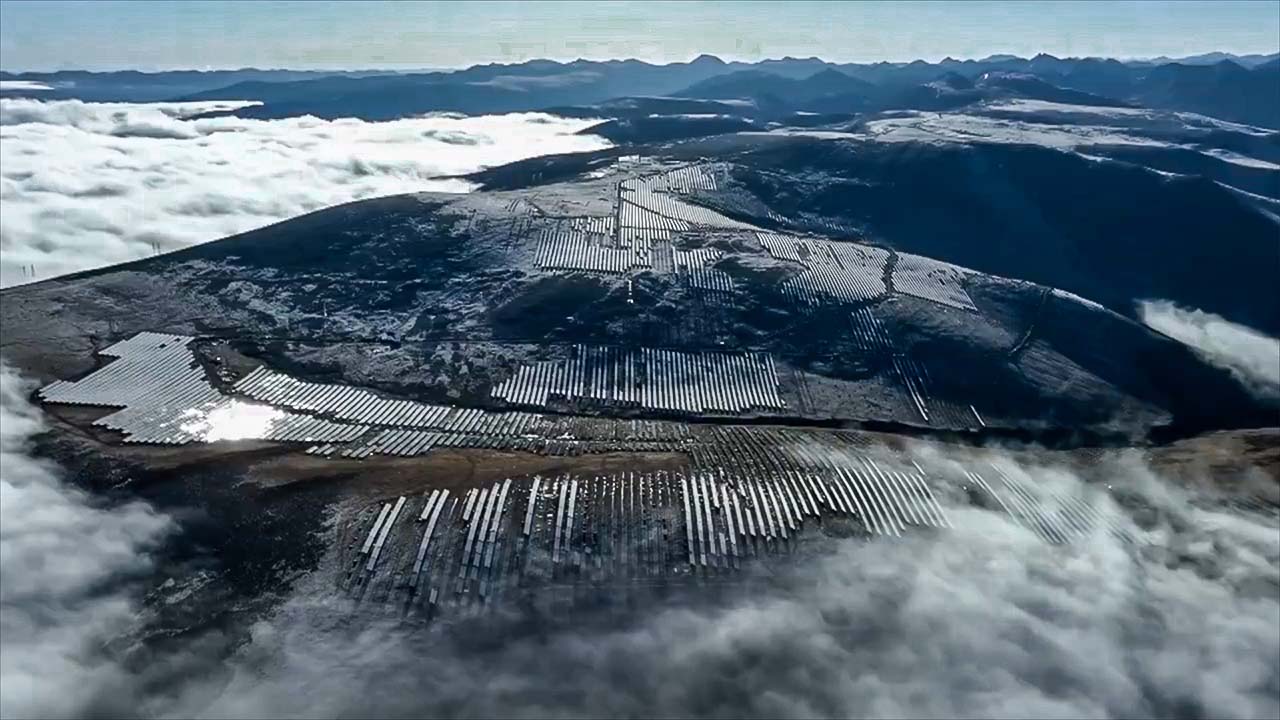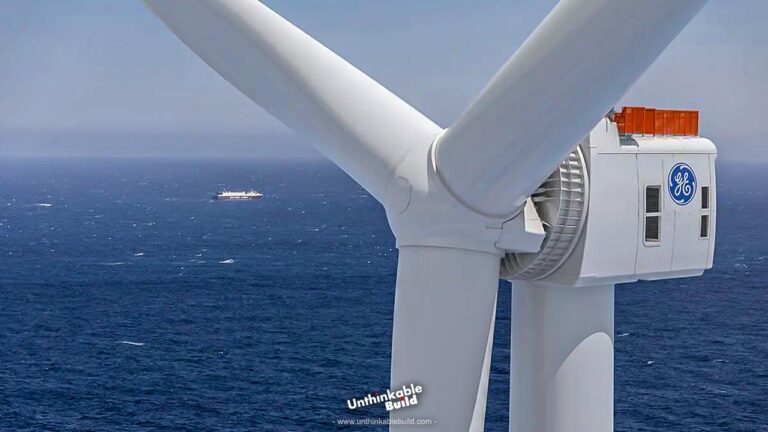China’s Kela Photovoltaic Power Station: The World’s Largest Hydro-Solar Facility
China uses coal for two-thirds of its electricity, which makes it the top country for greenhouse gas emissions each year. The pollution from its electricity is about as much as the whole U.S. economy produces. And in 2023, China wants to build even more coal power plants quickly.
But at the same time, China is also working hard on renewable energy like wind and solar. It’s adding these kinds of projects to its energy system almost as quickly as all other countries in the world put together. In 2020, China added three times more wind and solar power than the U.S. And in the first half of 2022, it spent U.S.$100 Billion on these clean energy sources, with plans to add even more in 2023.
China has a chance to choose clean energy over coal right now. This would answer the worldwide call to stop building fossil fuel infrastructure and take advantage of China’s strong position in renewable energy. In fact, new studies show that China could have 80% of its electricity come from clean sources by 2035 without it costing more, needing to build new coal plants, or losing reliability in its energy supply.
As nations globally strive to set and achieve ambitious environmental targets, aiming to significantly reduce carbon emissions and reach carbon neutrality by the year 2050, China has positioned itself at the forefront of this initiative. With its vast economy and unparalleled capacity to rapidly initiate and execute large-scale infrastructure projects, China has recently completed a groundbreaking project that ingeniously melds solar power with hydro-electric power production at a considerable altitude. Conceived by the Design and Research Institute of PowerChina Chengdu in 2016, the Kela photovoltaic (PV) power station project officially commenced construction in July 2022.
Despite the daunting challenges presented by the high-altitude, low-oxygen environment in which it is situated, the innovative hydro-solar power plant triumphantly began full operations in March 2023. Lauded as the largest facility of its kind in the world, the Kela PV power station is strategically located in the Yalong River Basin, nestled within the Tibetan Autonomous Prefecture of Garze in the southwestern part of China’s Sichuan province. This monumental achievement not only underscores China’s commitment to environmental stewardship but also showcases its remarkable ability to overcome the logistical hurdles inherent in such complex and innovative endeavors.
Also Read: Woodsmith Mine will Help the UK Economy for the Next 50 Years
The Kela Photovoltaic Power Station, acclaimed as the world’s largest and highest-altitude hydro-solar power plant, stands as a testament to China’s commitment to renewable energy and technological innovation. Nestled in the Yalong River Basin of the Tibetan Autonomous Prefecture of Garze in Sichuan Province’s Yajiang County, the plant operates at an awe-inspiring altitude of around 4,600 Meters, surpassing even the altitude of the Ali region in Xizang, known as the Third Pole of the world. With an installed capacity scale of 1 Million Kilowatts, the Kela Power Station is a marvel of engineering, capable of generating 2 Billion Kilowatt-Hours (kWh) annually – enough to meet the energy needs of 700,000 Households for an entire year.
The hydro-solar power grid of Kela is a unique blend of photovoltaic (PV) and hydropower technologies, generating electricity through a water-light complementary manner. This method ensures a stable and high-quality clean energy supply, as the hydropower component seamlessly compensates for the fluctuations in the PV stations’ power generation due to variations in sunlight availability during day and night, and amid changing weather conditions. In full operation, the plant has the capacity to charge 15,000 Electric Vehicles, each with a range of 550 Kilometers, within just an hour. This colossal output is equivalent to saving 600,000 Tonnes of standard coal, while significantly reducing carbon dioxide emissions by more than 1.6 Million Tonnes.
Spanning an area exceeding 16 Million Square Meters, equivalent to over 2,000 Standard Football Fields, the Kela Power Station is an exemplar of grandeur and scale. A total of 527,000 photovoltaic foundation piles are installed, collectively weighing as much as 222 C919 Aircraft – China’s first domestically constructed large passenger plane. If laid end to end, these piles would stretch over 1,400 Kilometers, 11 times the total length of the Beijing-Tianjin Railway. The construction also consumed nearly 50,000 Tonnes of Steel, enough to erect another National Stadium (Bird’s Nest), which hosted the 2022 Beijing Winter Olympics opening ceremony.
Despite the challenges posed by the extreme cold weather and the project’s colossal scale, the construction of the Kela Power Station was marked by efficiency and speed, completing this Herculean task in a mere six months. In a single day, the project team managed to install 7,000 PV Bracket Foundations, 1,200 Sets of PV Brackets, 33,000 Pieces of PV Modules, and 30 Box Transformers, showcasing an unparalleled level of operational efficiency.
Strategically situated next to National Highway 318, a crucial transport route linking Sichuan to the neighboring Xizang Autonomous Region, the Kela Power Station is not just a feat of engineering but also a vital link in China’s clean energy network. With its groundbreaking scale, innovative technology, and commitment to sustainability, the Kela Photovoltaic Power Station is undoubtedly a landmark achievement in the global transition to renewable energy, solidifying its place in history as a beacon of progress and a catalyst for change.
In the pursuit of energy independence and the attainment of its ambitious dual carbon objectives, China inaugurates the Kela hydropower station, a pioneer project of the 14th Five-Year Plan Period (2021-2025) positioned within the Yalong River Clean Energy Base. The conception of the Kela project, initiated in 2016, is attributed to the Design and Research Institute of PowerChina Chengdu, and witnessed the commencement of its construction phase in July 2022.
Kela stands as the inaugural phase of the Yalong River’s Lianghekou Hydropower Station, which, with a staggering installed capacity of three million kilowatts, began its operations in March. The electricity harnessed from Kela will be channeled to Lianghekou, prior to its integration into the broader power grid, thereby contributing to the formation of an expansive renewable energy hub.
Upon its completion, the Yalong River Clean Energy Base is poised to boast an installed capacity that surpasses 100 Million Kilowatts, coupled with an annual power generation capacity hovering around 300 Billion kWh. This colossal output is poised to meet the annual energy requirements of 100 Million Households, marking a significant stride towards energy sufficiency.
Also Read: Uzbekistan to Access Arabian Sea via Trans-Afghan Railway Project
China has established itself as a frontrunner in the realm of renewable energy development, with the Kela photovoltaic (PV) power station significantly contributing to the nation’s diverse energy portfolio as the largest hybrid solar-hydropower facility worldwide. The concept of the Kela station was conceived by the Design and Research Institute of Power China Chengdu in 2016. Subsequently, Yalong River Hydropower Development, also referred to as Yalong Hydro, initiated the construction of the station, aiming to augment the renewable energy capacity within the Yalong River basin.
Furthermore, the Kela project is set to metamorphose into one of the globe’s most formidable bastions of green, clean, and renewable energy, propelling China towards the pinnacle of achieving peak carbon emissions and carbon neutrality. This transition will not only optimize the national energy framework but will also invigorate various sectors, ranging from agriculture and tourism to transportation, fostering a comprehensive and sustainable development across the nation.
The symbiotic relationship between Kela and Lianghekou represents the nation’s strategic approach towards renewable energy production, creating a resilient and sustainable energy ecosystem that aligns with global environmental objectives. As China strides forward in its green energy journey, the Yalong River Clean Energy Base, with Kela at its forefront, stands as a monumental testament to the country’s unwavering commitment to a cleaner, greener, and more sustainable future.
The Kela hydro-photovoltaic power station is more than just a marvel of engineering; it is a testament to China’s unwavering commitment to pioneering sustainable and innovative energy solutions for a cleaner, greener future.
What are your thoughts on the Kela photovoltaic (PV) power station? Please share your opinions in the comments section, and don’t forget to like this video and subscribe to our channel.







